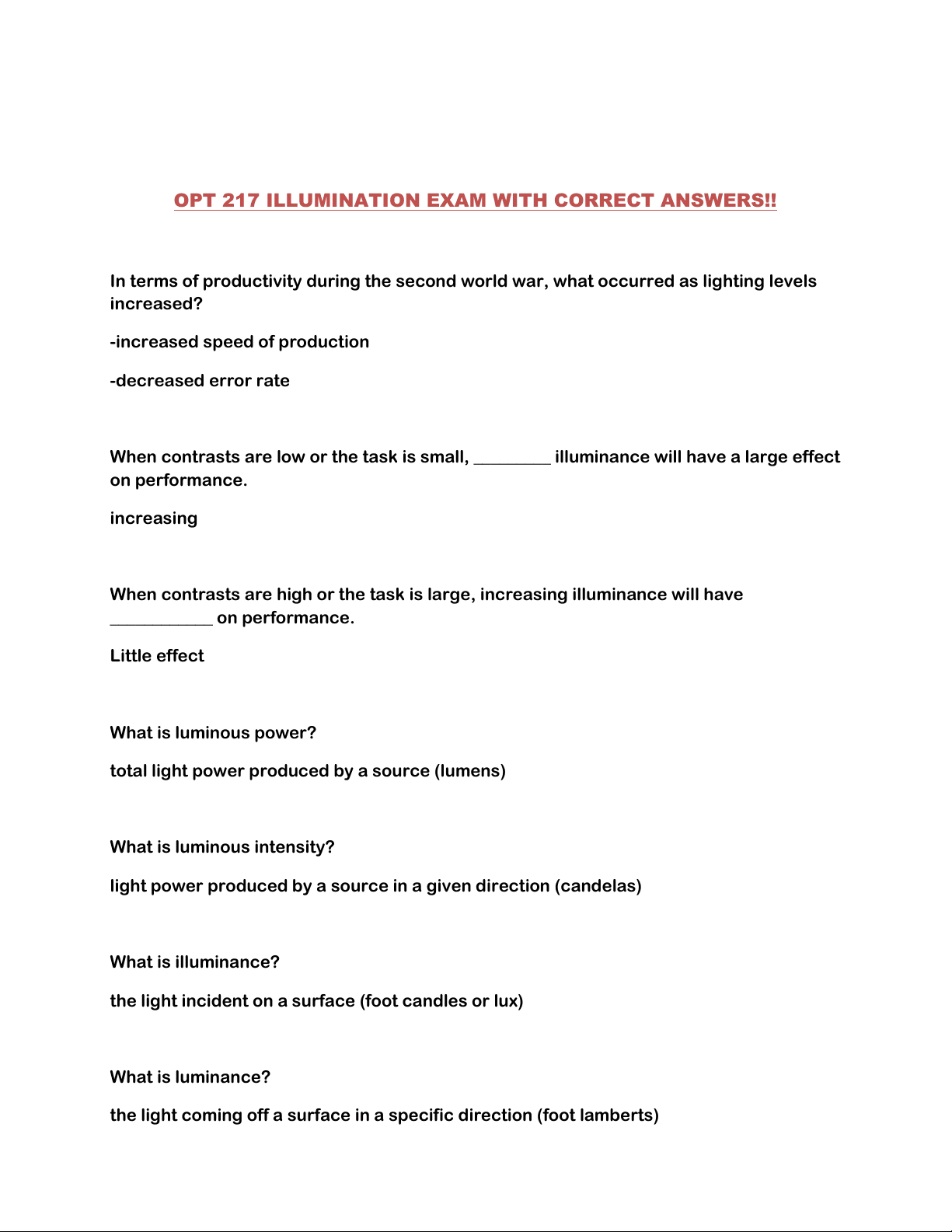
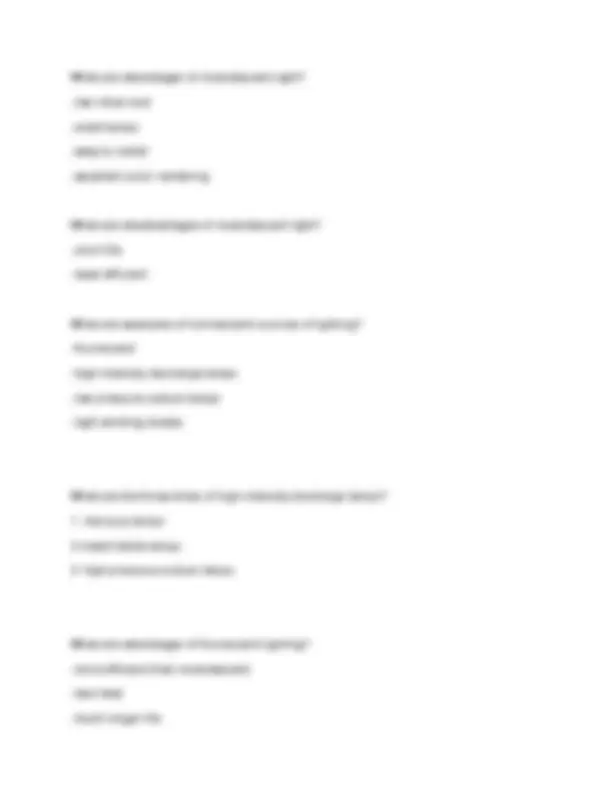
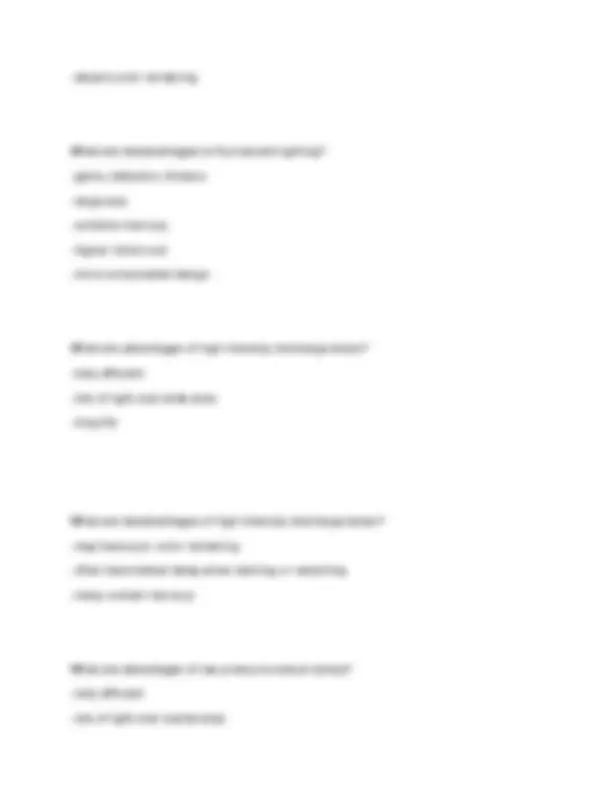
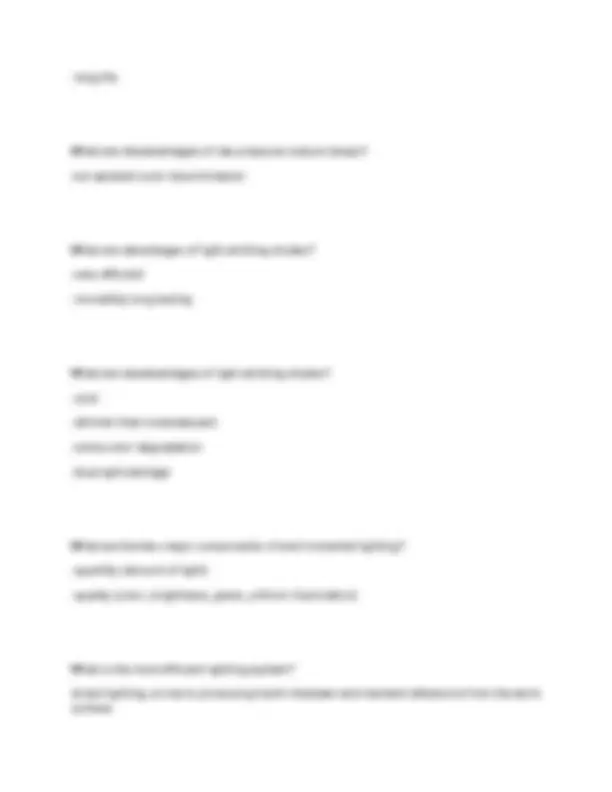
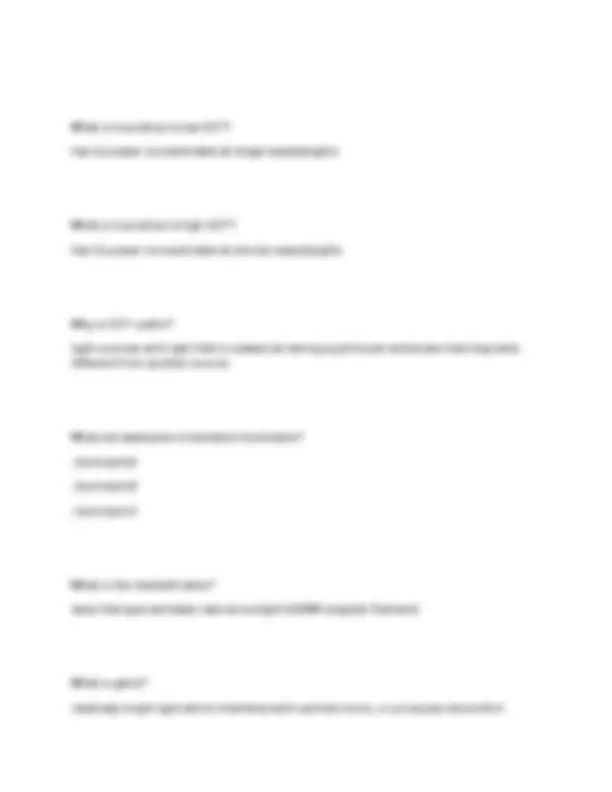
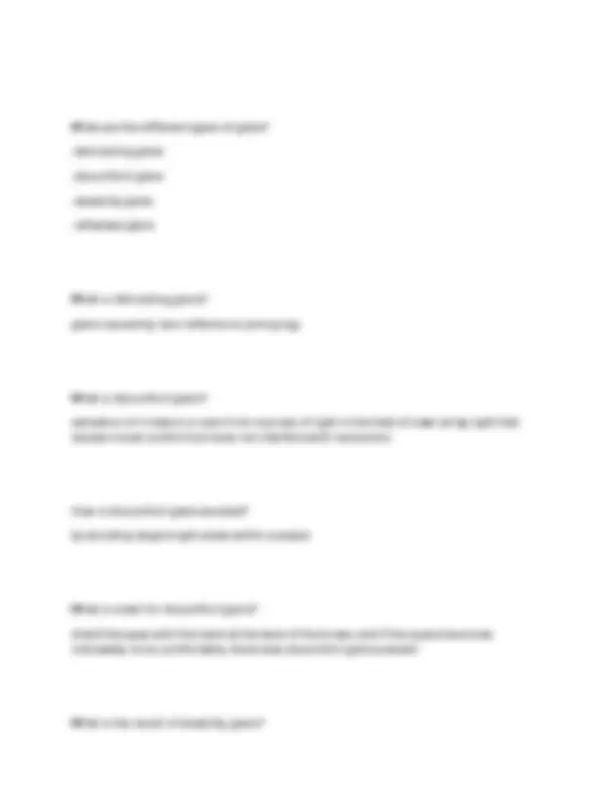
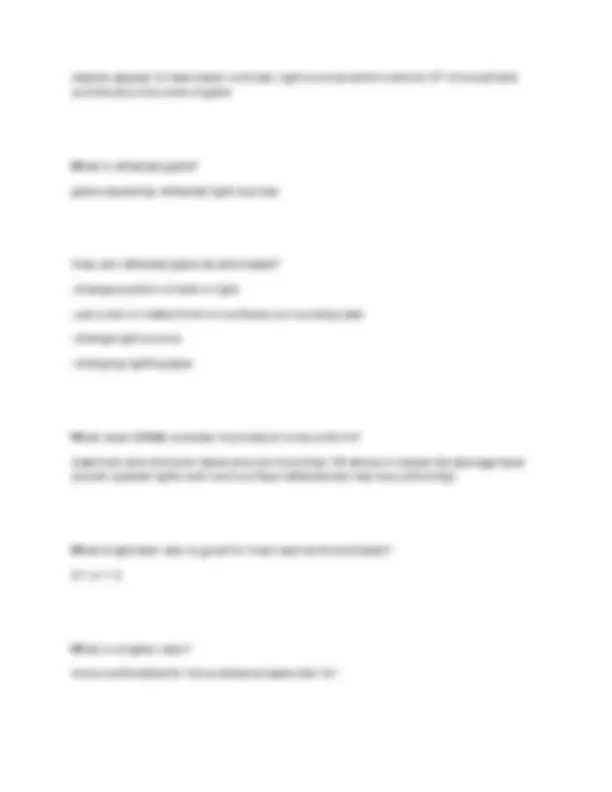


Study with the several resources on Docsity

Earn points by helping other students or get them with a premium plan


Prepare for your exams
Study with the several resources on Docsity

Earn points to download
Earn points by helping other students or get them with a premium plan
Community
Ask the community for help and clear up your study doubts
Discover the best universities in your country according to Docsity users
Free resources
Download our free guides on studying techniques, anxiety management strategies, and thesis advice from Docsity tutors
A comprehensive set of questions and answers related to illumination and lighting principles. It covers various aspects of lighting, including luminous power, intensity, illuminance, luminance, reflectance, and different types of light sources. The document also explores the importance of color rendering, correlated color temperature, and glare in lighting design. It is a valuable resource for students studying lighting design, architecture, or related fields.
Typology: Exams
1 / 11

This page cannot be seen from the preview
Don't miss anything!







In terms of productivity during the second world war, what occurred as lighting levels increased? -increased speed of production -decreased error rate
When contrasts are low or the task is small, _________ illuminance will have a large effect on performance. increasing
When contrasts are high or the task is large, increasing illuminance will have ____________ on performance. Little effect
What is luminous power? total light power produced by a source (lumens)
What is luminous intensity? light power produced by a source in a given direction (candelas)
What is illuminance? the light incident on a surface (foot candles or lux)
What is luminance? the light coming off a surface in a specific direction (foot lamberts)
What is reflectance? luminance/illumination
What is luminaire? a complete lighting unit consisting of a light source, housing, supports, shields, etc
What is wattage? the amount of electricity consumed by a light source
What are lumens? amount of light that a light source produces
What is efficiency? lumens/watt
What is meant by incandescent? produces light through heat
What is meant by luminescent? produces light through excitation of individual atoms
What are examples of incandescent sources of lighting? -incandescent lamps -conventional light bulbs -halogen lamps
-decent color rendering
What are disadvantages to fluorescent lighting? -glare, reflection, flickers -large size -contains mercury -higher initial cost -more complicated design
What are advantages of high intensity discharge lamps? -very efficient -lots of light over wide area -long life
What are disadvantages of high intensity discharge lamps? -may have poor color rendering -often have ballast delay when starting or restarting -many contain mercury
What are advantages of low pressure sodium lamps? -very efficient -lots of light over a wide area
-long life
What are disadvantages of low pressure sodium lamps? non existent color discrimination
What are advantages of light emitting diodes? -very efficient -incredibly long lasting
What are disadvantages of light emitting diodes? -cost -dimmer than incandescent -some color degradation -blue light damage
What are the two major components of environmental lighting? -quantity (amount of light) -quality (color, brightness, glare, uniform illumination)
What is the most efficient lighting system? direct lighting; prone to producing harsh shadows and marked reflections from the work surface
What is object color? the perceived or spectral color of an object based on its reflecting characteristics in combination with the characteristics of the illuminating source
What is object color important for? jobs which require color matching (coded electronic wiring, paint, matching, printing)
What is color rendering? how natural and normal will a light source make things appear
What is the color rendering index of incandescent lamps? 100
T or F: CRI tells you nothing about what any particular color will look like True
What is the desired CRI for indoor lighting? 80-
What is correlated color temperature? the measure of a light's color when the light is illuminated; equates the appearance of a source to a blackbody radiator operating the same temperature
What is true about a low CCT? has its power concentrated at longer wavelengths
What is true about a high CCT? has its power concentrated at shorter wavelengths
Why is CCT useful? light sources emit light that is viewed as having a particular whiteness that may be/is different from another source
What are examples of standard illuminants? -illuminant A -illuminant B -illuminant C
What is the macbeth lamp? lamp that approximates natural sunlight (500W tungsten filament)
What is glare? relatively bright light which interferes with optimal vision, or produces discomfort
objects appear to have lower contrast; light sources within central 10° of visual field contribute to this kind of glare
What is reflected glare? glare caused by reflected light sources
How can reflected glare be eliminated? -change position of task or light -use a dull or matte finish on surfaces surrounding task -change light source -changing lighting type
When does IESNA consider illumination to be uniform? maximum and minimum levels are not more than 1/6 above or below the average level (closer spaced lights and room surface reflectances improve uniformity)
What brightness ratio is good for most near work and tasks? 3:1 or 1:
What is a higher ratio? more comfortable for more distance tasks like 10:!
When is a 40:1 ratio used? in storage or outdoor activities